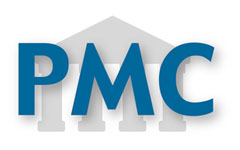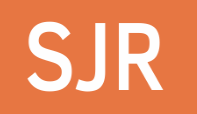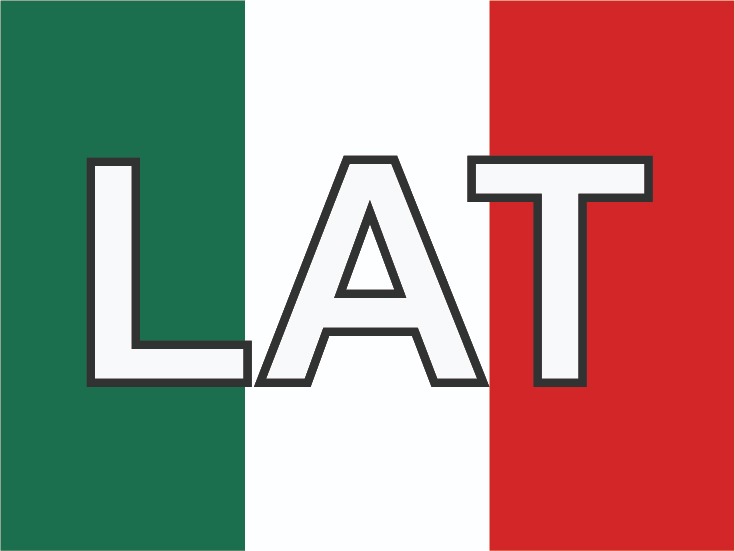Non-pharmaceutical interventions for containment, mitigation and suppression of COVID-19 infection
Abstract
The best available scientific evidence is required to design effective non-pharmaceutical interventions (NPIs) to help policymakers to contain COVID-19 outbreaks. The aim of this review is to describe which NPIs used different countries and a when they use them. It also explores how NPIs impact the number of cases, the mortality, and the capacity of health systems. We consulted eight web pages of transnational organizations, 17 of international media, 99 of government institutions in the 19 countries included, and besides, we included nine studies (out of 34 identified) that met inclusion criteria. We found that some countries are focused on establishing travel restrictions, isolation of identified cases, and high-risk people. Others have a more intense combination of mandatory quarantine and other drastic social distancing measures. Some countries have implemented interventions in the first fifteen days after detecting the first case, while others have taken more than 30 days. The effectiveness of isolated NPIs may be limited, but combined interventions have shown to be effective in reducing the transmissibility of the disease, the collapse of health care services, and mortality. When the number of new cases has been controlled, it is necessary to maintain social distancing measures, self-isolation, and contact tracing for several months. The policy decision-making in this time should be aimed to optimize the opportunities of saving lives, reducing the collapse of health services, and minimizing the economic and social impact over the general population, but principally over the most vulnerable. The timing of implementing and lifting interventions is likely to have a substantial effect on those objectives.
Authors
Downloads
Keywords
- covid-19
- coronavirus
- non-pharmaceutical interventions
- containment
- mitigation
- supression
- pandemic
- patient isolation
- social isolation
- quarantane
References
Center for Systems Science and Engineering (CSSE) at Johns Hopkins University, Baltimore, MD, USA. Coronavirus COVID-19 Global Cases [Internet]. 2020 [cited 2020 Mar 23]. Available from: https://data.humdata.org/dataset/novel-coronavirus-2019-ncov-cases
Organization WH. WHO Director-General's opening remarks at the media briefing on COVID-19-11 March 2020 [Internet]. Geneva, Switzerland. 2020. Available from: https://www.who.int/dg/speeches/detail/who-director-general-s-opening-remarks-at-the-media-briefing-on-covid-19---11-march-2020
Presidencia de la República. Declaración del estado de emergencia Colombia: Marzo 2017. Colombia; 2020 p. 1-16.
Ferguson NM, Laydon D, Nedjati-Gilani G, Imai N, Ainslie K, Baguelin M, et al. Impact of non-pharmaceutical interventions (Non-pharmaceutical interventions) to reduce COVID-19 mortality and healthcare demand. 2020;(March):20.
ECDC (European Centre for Disease Prevention and Control. Guidelines for the use of non-pharmaceutical measures to delay and mitigate the impact of 2019-nCoV. 2020.
Nunan D, Brassey J. What is the evidence for mass gatherings during global pandemics? A rapid summary of best-available evidence. Cent Evidence-Based Med. 2020;1-8.
Hossain MP, Junus A, Zhu X, Jia P, Wen T-H, Pfeiffer D, et al. The effects of border control and quarantine measures on global spread of COVID-19. medRxiv. 2020;2020.03.13.20035261. https://doi.org/10.1101/2020.03.13.20035261
States EEAM, Kingdom U. Considerations relating to social distancing measures in response to the COVID-19 epidemic Scope of this document Key points. 2020;(March):1-10.
Lai S, Ruktanonchai NW, Zhou L, Prosper O, Luo W, Floyd JR, et al. Effect of non-pharmaceutical interventions for containing the COVID-19 outbreak in China. medRxiv. 2020;1(1):1-29. https://doi.org/10.1101/2020.03.03.20029843
Wilder-Smith A, Chiew CJ, Lee VJ. Can we contain the COVID-19 outbreak with the same measures as for SARS? Lancet Infect Dis [Internet]. 2020;3099(20). Available from: http://www.ncbi.nlm.nih.gov/pubmed/32145768 https://doi.org/10.1016/S1473-3099(20)30129-8
Zhang C, Chen C, Shen W, Tang F, LEi H, Xie Y, et al. Impact of population movement on the spread of 2019-nCoV in China. Lancet Infect Dis. 2020;Preprint:30. https://doi.org/10.2139/ssrn.3546090
Tian H, Liu Y, Li Y, Wu C-H, Chen B, Kraemer MUG, et al. The impact of transmission control measures during the first 50 days of the COVID-19 epidemic in China. medRxiv Prepr. 2020;1(1):1-29. https://doi.org/10.1101/2020.01.30.20019844
Lau H, Khosrawipour V, Kocbach P, Mikolajczyk A, Schubert J, Bania J, et al. The positive impact of lockdown in Wuhan on containing the COVID-19 outbreak in China. J Travel Med. 2020;001(714). https://doi.org/10.1093/jtm/taaa037
Prem K, Liu Y, Russell T, Kucharski AJ, Eggo RM, Davies N, et al. The effect of control strategies that reduce social mixing on outcomes of the COVID-19 epidemic in Wuhan, China. medRxiv. 2020;2667(20):2020.03.09.20033050. https://doi.org/10.1101/2020.03.09.20033050
Chen W, Wang Q, Li YQ, Yu HL, Xia YY, Zhang ML, et al. [Early containment strategies and core measures for prevention and control of novel coronavirus pneumonia in China]. Zhonghua Yu Fang Yi Xue Za Zhi. 2020 Feb;54(3):1-6.
Anderson RM, Heesterbeek H, Klinkenberg D, Hollingsworth TD. How will country-based mitigation measures influence the course of the COVID-19 epidemic? Lancet [Internet]. 2020;2019(20):1-4. Available from: https://linkinghub.elsevier.com/retrieve/pii/S0140673620305675
Team Rs. RStudio: integrated development for R. RStudio, Inc, Boston, MA URL http//www rstudio com. 2015;42:14.
Presidencia de Mexivo. INFORME TÉCNICO COVID 19 14 MARZO 2020 [Internet]. 2020 [cited 2020 Mar 28]. Available from: https://presidente.gob.mx/informe-tecnico-covid-19-14-marzo-2020/
KCDC. Press Release: The updates on COVID-19 in Korea [Internet]. 2020 [cited 2020 Mar 28]. Available from: https://www.cdc.go.kr/board/board.es?mid=a30402000000&bid=0030
Perfil. Nueva York y California, en cuarentena total por Covid-19. Perfil [Internet]. 2020; Available from: https://www.perfil.com/noticias/internacional/nueva-york-y-california-en-cuarentena-total-por-covid-19.phtml
Nussbaumer-streit B, Nussbaumer-streit B, Nussbaumer-streit B, Chapman A, Dobrescu AI, Mayr V, et al. The Lancet Global Health The Effectiveness of Quarantine to Control the Coronavirus Disease 2019 : a Rapid The Effectiveness of Quarantine to Control the Coronavirus Disease 2019 : a Rapid Review. 2020; https://doi.org/10.2139/ssrn.3550010
Hellewell J, Abbott S, Gimma A, Bosse NI, Jarvis CI, Russell TW, et al. Feasibility of controlling COVID-19 outbreaks by isolation of cases and contacts. Lancet Glob Heal. 2020;488-96. https://doi.org/10.1016/S2214-109X(20)30074-7
González-jaramillo V, González-jaramillo N, Gómez-restrepo C, Palacio-acosta CA, Gómez-lópez A, Franco OH. Proyecciones de impacto de la pandemia COVID-19 en la población colombiana, según medidas de mitigación. Datos preliminares de modelos epidemiológicos para el periodo del 18 de marzo al 18 de abril de 2020. Rev Salud Pública. 2020;(22):1-6.
Colbourn T. Comment COVID-19 : extending or relaxing distancing control measures. Lancet Public Heal [Internet]. 2020;2667(20):19-20. Available from: http://dx.doi.org/10.1016/S2468-2667(20)30072-4 https://doi.org/10.1016/S2468-2667(20)30072-4
Nussbaumer-streit B, Chapman A, Dobrescu AI, Mayr V, Persad E, Klerings I, et al. The Effectiveness of Quarantine to Control the Coronavirus Disease 2019: a Rapid Review. Lancet Glob Heal. 2020;Preprint. https://doi.org/10.2139/ssrn.3550010
Brooks SK, Webster RK, Smith LE, Woodland L, Wessely S, Greenberg N, et al. The psychological impact of quarantine and how to reduce it: Rapid review of the evidence. Lancet. 2020;Preprint. https://doi.org/10.1016/S0140-6736(20)30460-8
Zhang C, Deng H, Zhang Q. The value of early response by surrounding areas of epidemic center hubei during COVID-2019 outbreak in china : A quasi- experiment analysis. 2019;1-16. https://doi.org/10.2139/ssrn.3548372

Copyright (c) 2020 Universidad del Valle

This work is licensed under a Creative Commons Attribution-NonCommercial 4.0 International License.
The copy rights of the articles published in Colombia Médica belong to the Universidad del Valle. The contents of the articles that appear in the Journal are exclusively the responsibility of the authors and do not necessarily reflect the opinions of the Editorial Committee of the Journal. It is allowed to reproduce the material published in Colombia Médica without prior authorization for non-commercial use




















